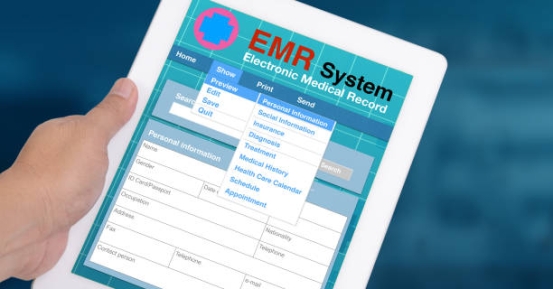How EMR Systems are Transforming Healthcare Management
Today, approximately 86% of hospitals across the U.S. use electronic medical record (EMR) systems, transforming how patient information is recorded, accessed, and shared. This article explores the benefits, challenges, and future developments in EMR technology within modern healthcare.
Today, approximately 86% of hospitals across the U.S. use electronic medical record (EMR) systems, transforming how patient information is recorded, accessed, and shared. This article explores the benefits, challenges, and future developments in EMR technology within modern healthcare.

What Are Electronic Medical Record Systems?
EMRs are digital versions of traditional paper charts, consolidating patient medical histories, diagnoses, treatments, and test results within a single practice. They provide healthcare professionals with quick and organized access to essential information, supporting informed clinical decisions. Key features include allergy alerts, medication interaction warnings, and preventive care reminders, all contributing to improved patient safety and better clinical outcomes.
Unlike patient-controlled personal health records, EMRs are primarily designed for provider use. Electronic health records (EHRs), in contrast, enable secure data exchange across multiple healthcare facilities, making interoperability and information sharing crucial in modern healthcare systems.
Benefits of Electronic Medical Record Systems
EMRs improve workflow efficiency by minimizing administrative burdens, allowing clinicians to dedicate more time to patient care. Studies show EMR systems can reduce paperwork by nearly 50%, streamlining daily operations. They also enhance data accuracy, reduce errors, and facilitate better health outcomes. Built-in reminders for preventive care encourage adherence, while secure communication tools promote collaboration among healthcare professionals, enhancing coordinated care.
Challenges of Implementation
Despite their advantages, implementing EMRs can be challenging. Initial costs—including software, hardware, and staff training—can be high, particularly for small or independent practices. Staff resistance may occur, as professionals accustomed to paper records face a learning curve, temporarily affecting workflow efficiency. Comprehensive training and ongoing support are essential to ensure confidence and competence in using EMR systems.
Data security is a critical concern. EMR systems must incorporate advanced cybersecurity measures and comply with regulations such as HIPAA, safeguarding sensitive patient information against breaches and misuse.
The Regulatory Landscape
Legislation such as the HITECH Act drives EMR adoption by incentivizing meaningful use of health IT to improve patient outcomes, safety, and clinical efficiency. HIPAA establishes strict standards for patient data privacy and security, ensuring ethical handling of sensitive information and fostering patient trust. Compliance with these regulations is integral to successful EMR integration.
The Future of EMR Systems
Emerging technologies promise to expand EMR capabilities. Enhanced interoperability will enable seamless sharing of patient data across multiple healthcare providers, improving care coordination. Artificial intelligence and machine learning will support predictive analytics, trend analysis, and informed decision-making.
Telemedicine integration is increasingly important, requiring EMRs to accommodate virtual consultations, remote monitoring, and other digital health workflows. Innovations in patient engagement, personalized care plans, and workflow automation are set to make EMRs more efficient, comprehensive, and patient-centered.
Conclusion
Electronic medical record systems are transforming healthcare delivery by streamlining information management, improving communication, and enhancing workflow efficiency. While challenges such as cost, cybersecurity, and staff adaptation exist, continuous technological advances and regulatory guidance are driving EMRs toward greater integration, effectiveness, and patient-focused care.
